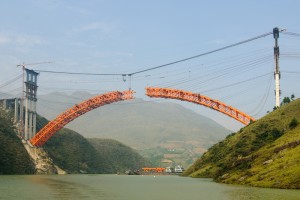 Have you ever been in a situation where you have to explain to someone what he or she needs to do? They look at you and you see them nodding, but you are not sure they “get” what you mean. From their perspective, the commentary in their head is saying,” I hope he does not ask me what they just said. I have no idea what he means and I don’t want to look stupid or lose my job. Go away, go away, go away”.
Have you ever been in a situation where you have to explain to someone what he or she needs to do? They look at you and you see them nodding, but you are not sure they “get” what you mean. From their perspective, the commentary in their head is saying,” I hope he does not ask me what they just said. I have no idea what he means and I don’t want to look stupid or lose my job. Go away, go away, go away”.
As a management coach, I am always asked, “How do we make sure that when we train our employees they perform at the level we expect?” My answer is to build a bridge of understanding between your brain and theirs.
Before we begin we need to realize that many training sessions fail because:
- The trainer did not make sure the person understood what they said. (Either they are rushing on to something else or took the person’s nodding as a signal for understanding)
- The trainee did not make sure they understood what was said. (See above commentary)
The first part of building the bridge: Make sure the trainee can repeat back to you what they are going to do.
By doing this, both the trainer and the trainee are clear on the actions necessary to complete a task and can adjust anything that is not correct.
Have you noticed that customer service agents repeat back your telephone number or address to make sure they got the information correct, adjusting anything they did not hear correctly? If you take that same approach to all of your training it will save you so much time later and this tactic will put your employee in a position to succeed from the beginning.
Now some of you may take offense and say, “Won’t that be condescending to the trainee”? That depends on how you ask the question. Don’t be condescending. 🙂 Ask because you care that they will be successful.
The second part to building the bridge: Speak to the trainee in a way they understand.
I refer to this as using correct Associations and Examples.
I came to understand the importance of using the right examples when I first moved to West Virginia to open up sales center. Growing up NJ and NYC sports were always useful for creating examples. I felt confident that I could use these to help me train my new team.
The problem I ran across in West Virginia was that I was in the heart of Nascar country, something a NJ boy knew nothing about. My baseball and football analogies worked only so well, so I had to take a crash course about Nascar. (Thanks to Eric and Nathan). Soon my coaching analogies started to be filled with examples from Nascar and this allowed me to bridge any learning gap by using examples THEY understood.
Remember to build your bridge you need to:
- Find associations and examples that mean something to your team.
- Make sure you and your trainee both walk away with a very clear set of next actions.
By using these two strategies, you will create a pathway that will lead your employees to the desired results.
Let me know your thoughts.
Glenn Pasch is the new COO for PCG Digital Marketing as well as an management coach with his performance consulting firm Improved Performance Solutions.

 Follow
Follow